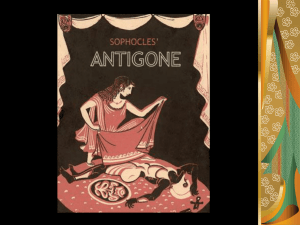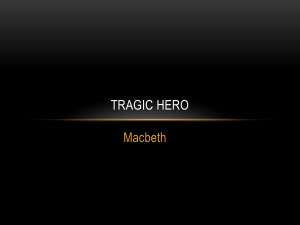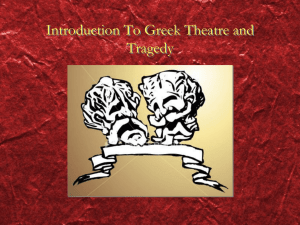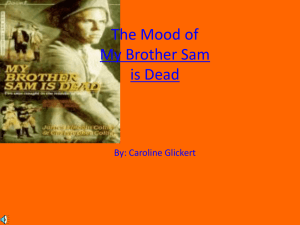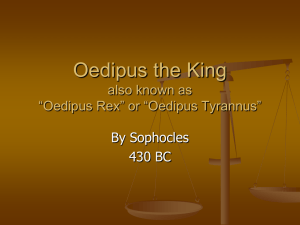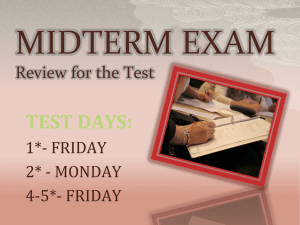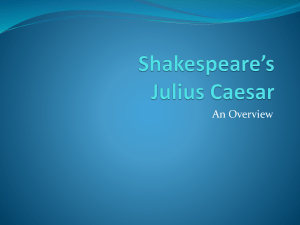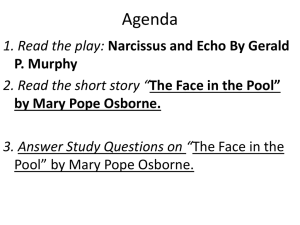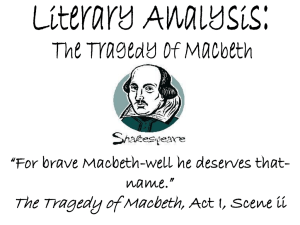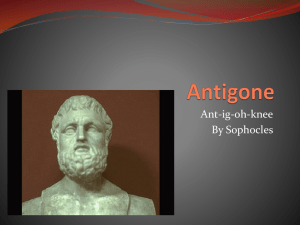ancient Greek theater
advertisement
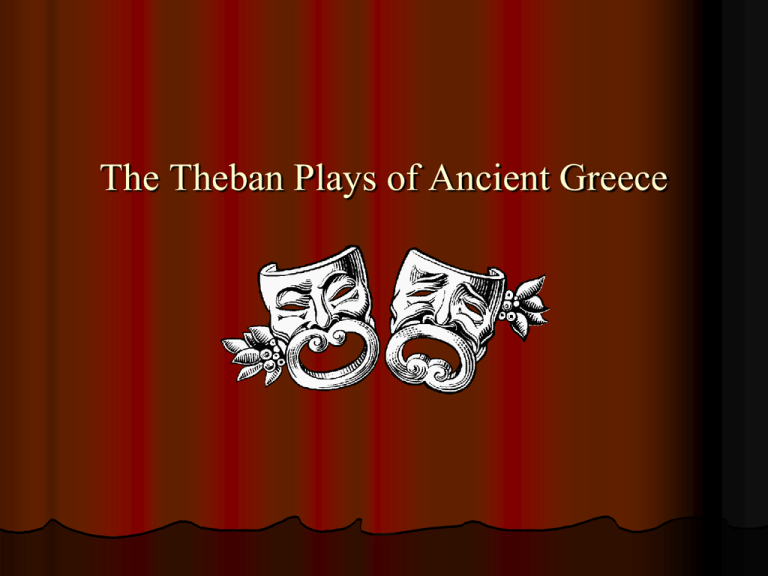
The Theban Plays of Ancient Greece History of Greek Theater Greek drama began as part of seasonal festivals honoring Dionysus, the god of wine and fertility. Plays were usually produced in the spring, during the harvest, which was symbolic of renewal and rejuvenation. Stories were well known to the audience (think Cinderella). Audiences wanted to see a fresh take on a familiar story. • • • Three tragedies were performed as well as one satyr play, a comedy about the gods. The plays were watched in open air amphitheaters (15,00040,000 people). The plays were judged by a committee and a winner would be announced. Winners were highly honored. A bird’s eye view of the theater Theater above the Temple of Apollo at Delphi Your view as an audience member would look like… Because the audience was so huge, and people were often seated far away from the stage (or orchestra), the actors needed to make themselves “larger than life.” So the actors wore masks. Some scholars believe that the actors also wore high-heeled shoes called kothornoi. Special Effects in Greek Theater The ekkyklema, or “rolled out thing,” was a mechanical device to roll out characters (dead) or other things behind the scene’s actions. This helped to prevent gory or murderous scenes from taking place on stage. Special Effects in Greek Theater The mechane was a pulley device used to raise actors in the air, which helped to represent actors flying in air. The Greek Chorus The Greek tragic chorus was a group of 15 men who would sing and dance, but their role was also to: •respond to the play in a manner the playwright hoped the audience would (or to represent the ideal spectator). •reflect on what has happened and what might happen next (also known as foreshadowing). •speak to and advise central characters regarding what they (the main characters) should do. Images of the Greek chorus Images of the Greek chorus Images of the Greek chorus Interesting fact: The first “actor” came from the ancient Greek chorus. According to legend, Thespis of Athens became the first actor in the Western world when he stepped outside the Greek chorus and entered into a dialogue with it. This is why actors are called thesbians. Sophocles He was born around 496 B.C. during Greece’s golden age, and died around 406 B.C. He wrote around 123 plays, but only seven remain in existence. At the age of 28 he won first prize at the Athens drama festival and after that never finished lower than 2nd place. Sophocles, continued He was very interested in showing how a person’s life is shaped by his choices and whims of chance (the fate – free will debate). The dangers of excessive pride (hubris) became a theme that Sophocles often touched upon. The Theban Cycle Sophocles wrote three plays, a trilogy, that centered around the royal house of Thebes (Oedipus the King, Oedipus at Colonus, and Antigone). Antigone , the third play in the series was actually written first, then Oedipus the King (the first play), and finally Oedipus at Colonus (second play). The three plays are linked together by specific characters but the themes and issues are drastically different in each. Elements of Greek Tragedy Aristotle, an ancient Greek philosopher, studied the plays of his time and noticed a trend in the main characters. Aristotle coined the phrase tragic hero and found that many of the heroic figures contained similar characteristics. The Characteristics of a Tragic Hero A tragic hero is larger than life and shows no one is immune to tragedy. A tragic hero must rise to good fortune and then fall to death or defeat. A tragic hero usually falls because of a flaw in his/her character known as a tragic flaw (hamartia). A tragic hero inspires pity and fear in his/her audience. The Tragic Process The experience of the tragic hero can be outlined as seven different “steps” in a sequence of actions. 1. Initial Incident: this is the action that gets the play moving, often some kind of conflict or problem. 2. Rising Action: this event pushes the tragic hero toward his peak of fortune. 3. Climax: this is the turning point when the tragic hero’s fortunes begin to turn for the worse. The Tragic Process, continued 4. Falling Action: this is when the world of the tragic hero begins to collapse. 5. Anagnorisis: this “moment of recognition” allows the tragic hero to become aware of what has happened, what went wrong, and what the truth is. The tragic hero has suffered from “mental blindness,” mistaking appearance for reality and clinging to an unreliable truth. The Tragic Process, continued 6. Catastrophe: despite the tragic hero’s anagnorisis, he or she cannot prevent the inevitable death or defeat which results from the mistakes made. 7. Order Restored: this is the time when, after the tragedy plays itself out, the world manages to keep going; it is the time when the strength of the human species is demonstrated because the tragedy teaches all of us but destroys “only” a few. The audience then walks away with a feeling of catharsis.
